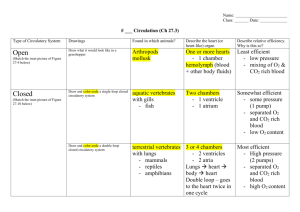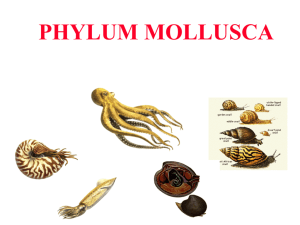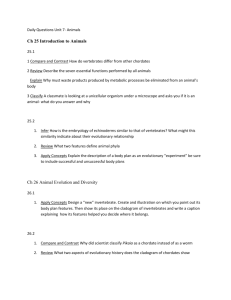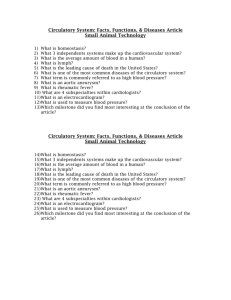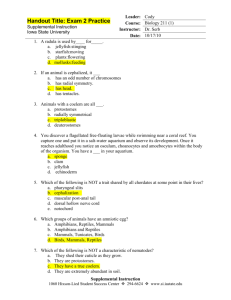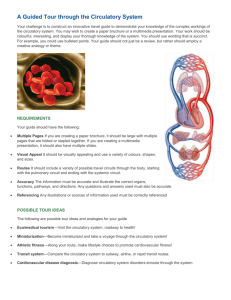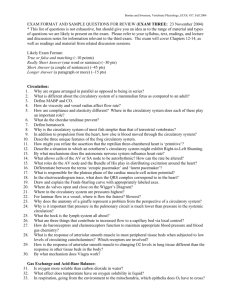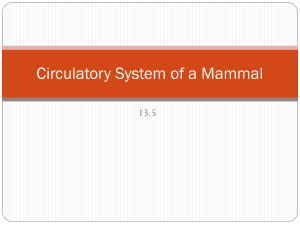Animals
advertisement
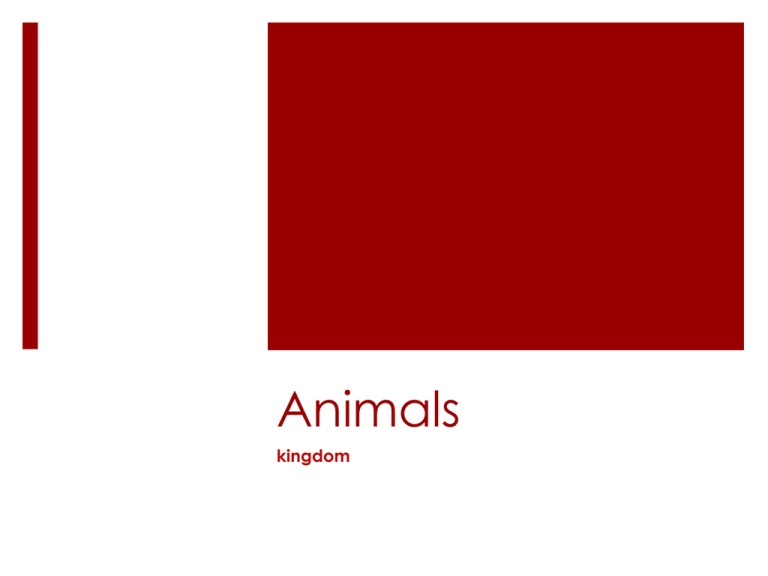
Animals kingdom What are their similarities? What are their differences? Objectives Name the main characteristics Explain what symmetry is Describe what is cephalization Mentioned the different body plans that animals have Explain the difference of an open circulatory system vs. a closed one Characteristics Eukaryotes without cell wall Multicellular Heterotrophs Locomotion Origin of animals Differentiation Specialization Heterotrophic Name the main characteristics of the animal kingdom Recall the levels of Classification Classification; Phylogenetic tree Asymmetrical Radial Symmetrical Body Symmetry Animals are classified by different symmetry plans. Planes Lets do a worksheet on symmetry. Name the 9 phylums as classification taxons. Cephalization Bilateral animals tend to have sensory and brain in the front. Body Plan Most have a body cavity filled with fluid. Classification; Phylogenetic tree Circulatory System Most have a circulation system. Circulatory System No circulatory system: ex. Sponges Open circulatory system: ex. Arthropods, mollusks Closed system: ex. mammals Circulatory System No circulatory system: ex. Sponges Circulatory System Open circulatory system: ex. Arthropods, mollusks Closed system: ex. mammals Circulatory System Closed system: ex. mammals Invertebrate vs. vertebrates Most have a circulation system. The one thing that all invertebrates have in common is their lack of a backbone; otherwise, they're as different from one another as they are from vertebrates. All vertebrates fall under one phylum, chordata; invertebrates, on the other hand, include over 30 different phyla, collectively accounting for 98 to 99 percent of all known animal species. Phylum Chordata General Characteristics: All chordates have a • dorsal hollow nerve tube, • a notochord, and • pharyngeal gill slits. All vertebrates (members of a subphylum of chordata) have a backbone (spinal column) and a closed circulatory system. Which phylum is closely related to Chordates? Classification; Phylogenetic tree
